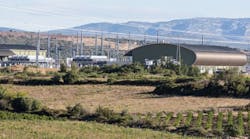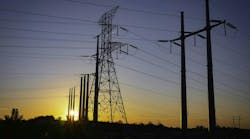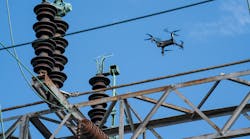With initial testing, Siemens began commissioning the converter stations for a high voltage direct current (HVDC) transmission link between France and Spain. The HVDC transmission system will commence commercial operation in the middle of 2015. It will double the energy exchange capacity between the two countries, which currently stands at 1400 MW. The HVDC link will also increase the supply reliability and ensure that additional renewable energy sources can be integrated without endangering the stability of the grid.
The establishment of an European electricity market requires further interconnections to be developed, so that the 34 interconnected European countries can reap the benefit of the most effective production resources. This interconnection will foster a closer convergence in electricity prices in the European countries linked up to the markets, and will allow Europe to benefit more widely from the renewable energies generated in the Iberian peninsula.
Siemens constructed the power converter stations for the HVDC link between Baixas west of Perpignan in France and Santa Llogaia in Spain, southwest of Figueras. The system can transmit a rated power of 2000 megawatts (MW) in both directions. Power reversal is possible in 150 milliseconds. The stations use HVDC Plus technology from Siemens with a transmission voltage of +/- 320 kV direct current (DC). The distance between the two power converter stations is around 65 kilometers. Underground DC cables in an 8 km tunnel that leads into the Pyrenees Mountains will transmit the power in both directions. Inelfe (Interconnexion Electrique France Espagne), a project joint venture between the grid operators Réseau de Transport d'Electricité (RTE), Paris, and Red Eléctrica de Espana (REE), Madrid, awarded the contract for the construction of the HVDC link. The contract has a total investment volume of approximately €700 million.
The HVDC Plus technology is based on self-commutated voltage-sourced converters (VSC) in a modular multilevel converter configuration (MMC) that convert alternating current (AC) into direct current and direct current into alternating current. In contrast to grid-commutated power converter technology, the HVDC Plus system works with power transistors that can be switched off (IGBT), enabling the commutation processes in the power converter to run independently of the grid voltage. The very fast control and protective intervention capabilities of the power converters provide for a high level of stability in the transmission system, which primarily serves to reduce grid faults and disturbances in the three-phase AC network. This significantly increases supply reliability for utility companies and power customers.
In the France/Spain HVDC project, Siemens has successfully increased the capacity of this modern converter technology to 1000 MW. In addition, it called for the implementation of technical features that could only be provided by this state-of-the-art converter technology. These features include continuous reactive power compensation independent of the energy transmission in the RTE and REE grids as well as a rapid reversal of energy flow in the event of a grid disturbance. Last but not least, the black-start capability function makes it possible for the HVDC transmission system to restart the affected power grid as quickly as possible.


